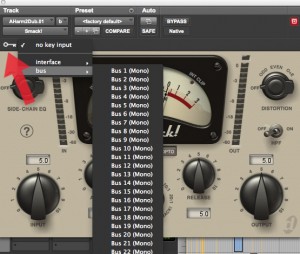


Technically, the audio through the sidechain input adjusts the threshold of the processor, which, in turn, affects the audio on the track where the processor exists. For example, you can feed the audio from a hi-hat track into a gate on a simple pad track to give the pad a choppy, rhythmic quality. Yanking your chainĪ sidechain is an input into a processor, and allows you to use one track’s audio to trigger a processor on another.

These sidechain functions can be harnessed via several of the effects in Studio One 5, including gate, compressor and various effects such as autofilter, channel strip, expander, fat channel, multiband dynamics, pro EQ, and Tricomp. In this tutorial, we’re highlighting a couple of techniques that can really add interest to your tracks using a gate and the sidechain functions in Studio One. We might have an idea that sounds good but there are certain techniques that can turn ‘good’ into ‘excellent’. Broadly speaking, music production can be understood as taking a musical theme or idea and turning it into something interesting.


 0 kommentar(er)
0 kommentar(er)
